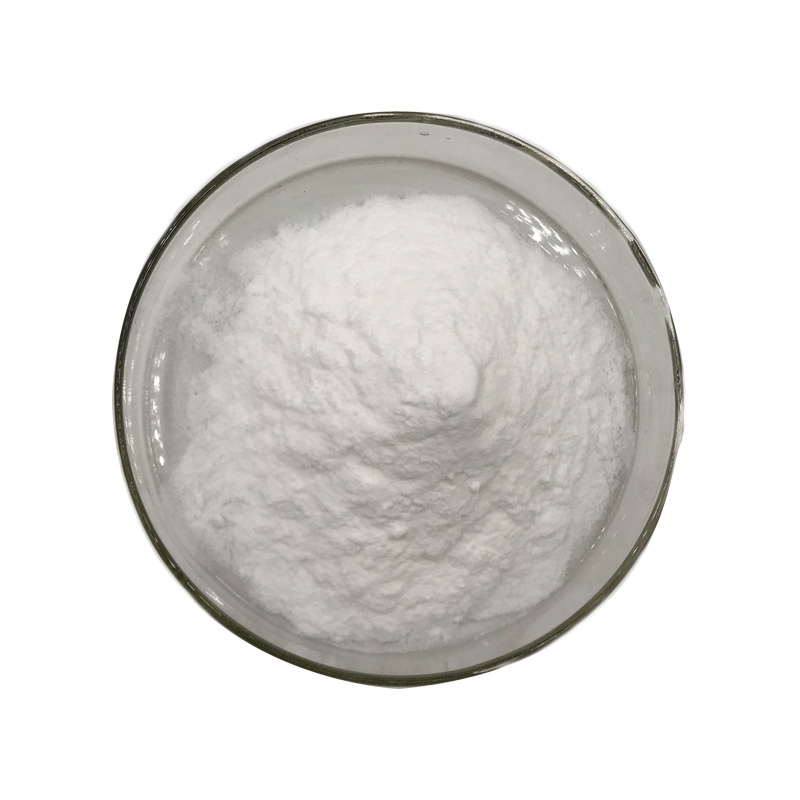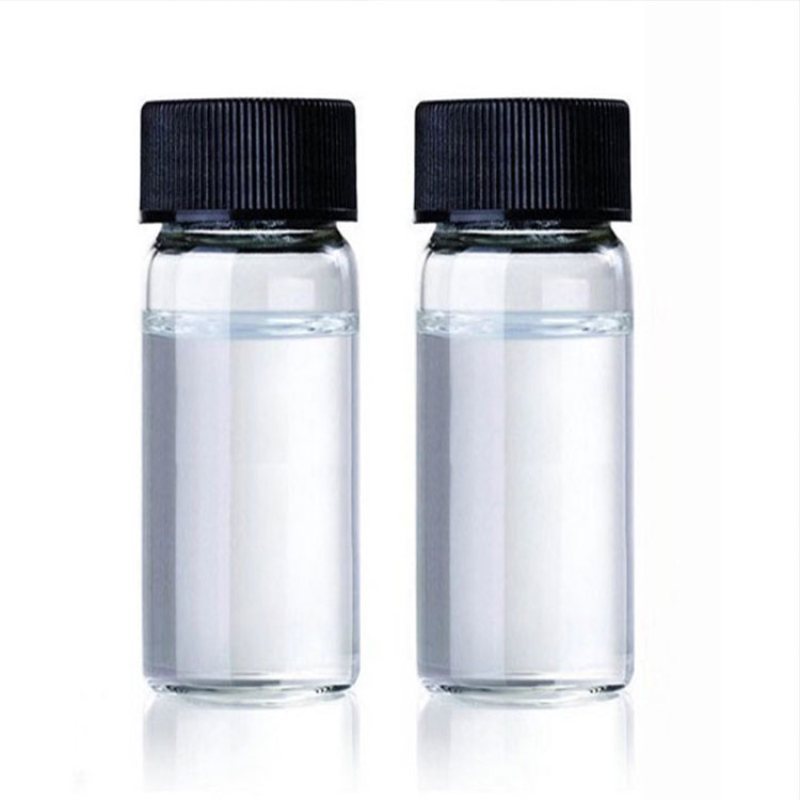Dodecyltrimethylammonium Bromide Chemical PropertiesMelting point 246 °C (dec.)(lit.)density 1.1566 (rough estimate)vapor pressure 0Pa at 20℃refractive index 1.5260 (estimate)Fp 246°Cstorage temp. Store below +30°C.solubility H2O: 0.1 M at 20 °C, clear, colorlessform Powdercolor White to slightly yellowWater Solubility solubleSensitive Hygroscopicλmaxλ: 240 nm Amax: ≤0.2λ: 250 nm Amax: ≤0.03λ: 260 nm Amax: ≤0.02λ: 500 nm Amax: ≤0.02BRN 3597463InChIKeyXJWSAJYUBXQQDR-UHFFFAOYSA-MCAS DataBase Reference1119-94-4(
Contact Now
SCANDIUM CHLORIDE CAS#10361-84-9Overview:Scandium Chloride, with the chemical formula ScCl3 and CAS number 10361-84-9, is a significant industrial chemical known for its unique properties and wide range of applications.
Contact Now
Products Description of D-Glucal CAS#13265-84-4D-glucosene, also called D-glucosene, is a pharmaceutical intermediate that can be prepared from pentaacetyl glucose through a three-step reaction.
Contact Now
Products Description of Diphenyl Ether CAS#101-84-8Diphenyl Ether (CAS#101-84-8) is a colorless crystalline solid or liquid with a mild, pleasant aroma. It is characterized by its colorless appearance and melts at a point around 81 °F (27.2 °C). When the temperature exceeds this melting point, it transforms into a colorless liquid. Diphenyl Ether is known for its distinct, strong floral-green, metallic geranium-like scent and is insoluble in water.This chemical is widely used as a heat transfer medium due to its thermal stability and low vapor pressure.
Contact Now
Products Description of 1,3-Dioxan-2-one homopolymer CAS#31852-84-3Polylactic acid is also known as polyhydroxypropionic acid or polylactide. It is a biodegradable polymer material formed by the polycondensation of lactic acid monomers. It is soluble in solvents such as chloroform, acetone, dioxane, dimethylformamide, benzene, toluene, and insoluble in saturated alkanes such as petroleum ether. It has good biocompatibility and blood compatibility, good anticoagulant properties in vitro, can be degraded by the human body, and excreted from the body as carbon dioxide and water.
Contact Now
Products Description of Stannous methanesulfonateCAS#53408-94-9Colorless transparent liquid with the smell of rotten eggs.Stannous methanesulfonate Chemical PropertiesMelting point -27°Cdensity 1.55refractive index 1.444Specific Gravity1.550Water Solubility Not miscible or difficult to mix in water.Sensitive Air SensitiveHydrolytic Sensitivity0: forms stable aqueous solutionsExposure limitsACGIH: TWA 0.1 mg/m3; STEL 0.2 mg/m3 (Skin)NIOSH: IDLH 25 mg/m3; TWA 0.1 mg/m3InChIKeyJALQQBGHJJURDQ-UHFFFAOYSA-LCAS DataBase Reference53408-94-9(CAS DataBase Reference)EPA Subs
Contact Now
Products Description of Hexafluorobisphenol A CAS#1478-61-1Bisphenol AF is also known as hexafluorobisphenol A, 2,2-bis(4-hydroxyphenyl)hexafluoropropane, 2,2-bis(4-hydroxyphenyl)hexafluoropropane, etc., referred to as BPAF. It is slightly soluble in carbon tetrachloride, difficult to dissolve in water, and easily soluble in organic solvents such as ethanol, acetone, ether, toluene, and strong alkaline solutions.
Contact Now
Products Description of Dioctyl sebacate CAS#122-62-3Dioctyl sebacate, also known as bis-2-ethylhexyl sebacate, referred to as DOS, is made by esterification of sebacic acid and 2-ethylhexanol. It is suitable for polyvinyl chloride, vinyl chloride copolymers, nitrocellulose, ethyl cellulose and synthetic rubber. It has high plasticizing efficiency and low volatility. It has excellent cold resistance, good heat resistance, light resistance and electrical insulation. It also has good lubricity when heated, making the product look good and feel good.
Contact Now
Products Description of 1,2-Bis(2-chloroethoxy)ethane CAS#112-26-51,2-Bis(2-chloroethoxy)ethane is a transparent to slightly yellow liquid at room temperature and pressure, and is insoluble in water. It is often used as a material chemical intermediate and a reaction solvent in organic chemical reactions.
Contact Now
Products Description of Hexafluorobisphenol A CAS#1478-61-1Bisphenol AF is also known as hexafluorobisphenol A, 2,2-bis(4-hydroxyphenyl)hexafluoropropane, 2,2-bis(4-hydroxyphenyl)hexafluoropropane, etc., referred to as BPAF. It is slightly soluble in carbon tetrachloride, hardly soluble in water, and easily soluble in organic solvents such as ethanol, acetone, ether, toluene and strong alkali solutions.
Contact Now
Products Description of Tert-Butyl 1-piperazinecarboxylate CAS#57260-71-6In modern chemical pharmaceuticals, 1-tert-butyloxycarbonylpiperazine plays a very important role because it is an important basic chemical raw material for many antitussive drugs, antiallergic drugs, antipsychotic drugs, antibacterial drugs, various pesticides, etc.
Contact Now
Products Description of 1,4-Benzoquinone CAS#106-51-4Parabenzoquinone is a quinone organic compound. Pure parabenzoquinone is a bright yellow crystal with a pungent smell similar to chlorine. Impure samples are often due to 1 :1 charge transfer complex) exists and the color is dim.
Contact Now
Products Description of CALCIUM TITANATE CAS#12049-50-2Calcium titanate is an inorganic substance with the chemical formula CaTiO3. It belongs to the cubic crystal system and is a basic inorganic dielectric material with excellent dielectric, temperature, mechanical and optical properties.
Contact Now
Products Description of Sodium perborate tetrahydrateCAS#10486-00-7 White monoclinic crystalline particles or powder. Melting point 63℃. Soluble in acid, alkali and glycerol, slightly soluble in water, the solution is alkaline (pHl0~11), the aqueous solution is unstable and easily releases active oxygen. In cold and dry air, sodium perborate with higher purity is more stable. Decomposes at 40℃ or in humid air and releases oxygen. Dissolves in its own crystal water at 63℃ and decomposes to form a sticky solid mass. Loses 3 crystal waters at above 70℃ to form a monohydrate.
Contact Now
Urea CAS#57-13-6The urea molecule is planar in the crystal structure, but the geometry around the nitrogens is pyramidal in the gas-phase minimum-energy structure. In solid urea, the oxygen center is engaged in two N-H-O hydrogen bonds. The resulting dense and energetically favourable hydrogen-bond network is probably established at the cost of efficient molecular packing: The structure is quite open, the ribbons forming tunnels with square cross-section.
Contact Now
Products Description of Cobalt Sulfate Heptahydrate CAS#10026-24-1A common cobalt compound that appears as a blue crystalline solid and is soluble in water. In the air, it gradually loses its crystal water and becomes powdery. Cobalt sulfate heptahydrate is widely used in chemical experiments. It can be used as a catalyst in organic synthesis reactions. In addition, it can be used to prepare other cobalt compounds, such as cobaltates and cobalt oxides.
Contact Now
Products Description of Hydroxypropyl-beta-cyclodextrin CAS#94035-02-6This product is a white or off-white amorphous or crystalline powder; odorless, slightly sweet taste; strong hygroscopicity.
Contact Now
Products Description of Phenibut CAS#1078-21-34-Amino-3-phenylbutyric acid hydrochloride is often used to prepare antidepressants.
Contact Now
Products Description of Tetraethylammonium bromide CAS#71-91-0Tetraethylammonium bromide is an organic substance with the chemical formula (C2H5)4NBr, which is white crystals. It is hygroscopic. It is easily soluble in water, ethanol, chloroform and acetone, slightly soluble in benzene, and its solubility in water is 2795 g/L (25°C). The pH of a 10% aqueous solution is 6.5, and the pH remains unchanged when heated to 95°C for 28 hours. It is irritating.
Contact Now
Products Description of Tetraethylammonium bromideCAS#71-91-0Tetraethylammonium bromide is an organic substance with the chemical formula (C2H5)4NBr, which is white crystals. It is hygroscopic. It is easily soluble in water, ethanol, chloroform and acetone, slightly soluble in benzene, and its solubility in water is 2795 g/L (25°C). The pH of a 10% aqueous solution is 6.5, and the pH remains unchanged when heated to 95°C for 28 hours. It is irritating.
Contact Now
Products Description of OBSH CAS#80-51-34,4'-Oxobenzenesulfonylhydrazide, also known as bis(benzenesulfonylhydrazide) ether, is an organic compound with the chemical formula C12H14N4O5S2.
Contact Now
Products Description of Poly(dipropyleneglycol)phenyl phosphite CAS#80584-86-7Colorless liquidFactory and Equipment ShowFast delivery timeInventory 2-3 working days New production 7-10 working days
Contact Now
Products Description of M-Phenylenediamine (m-PDA) CAS#108-45-2Meta-phenylenediamine is an important raw material for organic synthesis. It is mainly used as a dye intermediate to produce basic orange, basic brown G, direct sunfast black G and other dyes. It is also used as fur dye and epoxy resin. It is used as a curing agent, cement coagulant, mordant, color developer, etc.
Contact Now
Products Description of Shellac CAS#9000-59-3 Shellac flakes, also known as shellac paint flakes or purple film flakes, are obtained by melting shellac raw glue or dissolving it with solvents to remove impurities. The color depth of the shellac paint flakes produced varies according to different requirements. Shellac paint flakes are a biological product used on furniture and home interior paint. They are free of pollutants, non-irritating odor, non-toxic, and non-allergic to the skin. They are a high-end paint.
Contact Now































